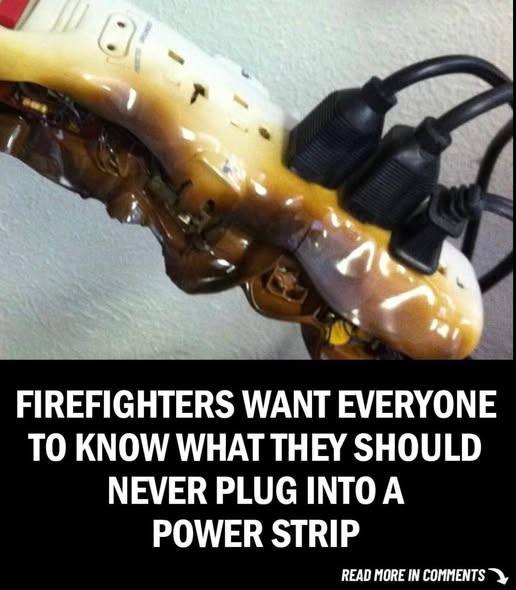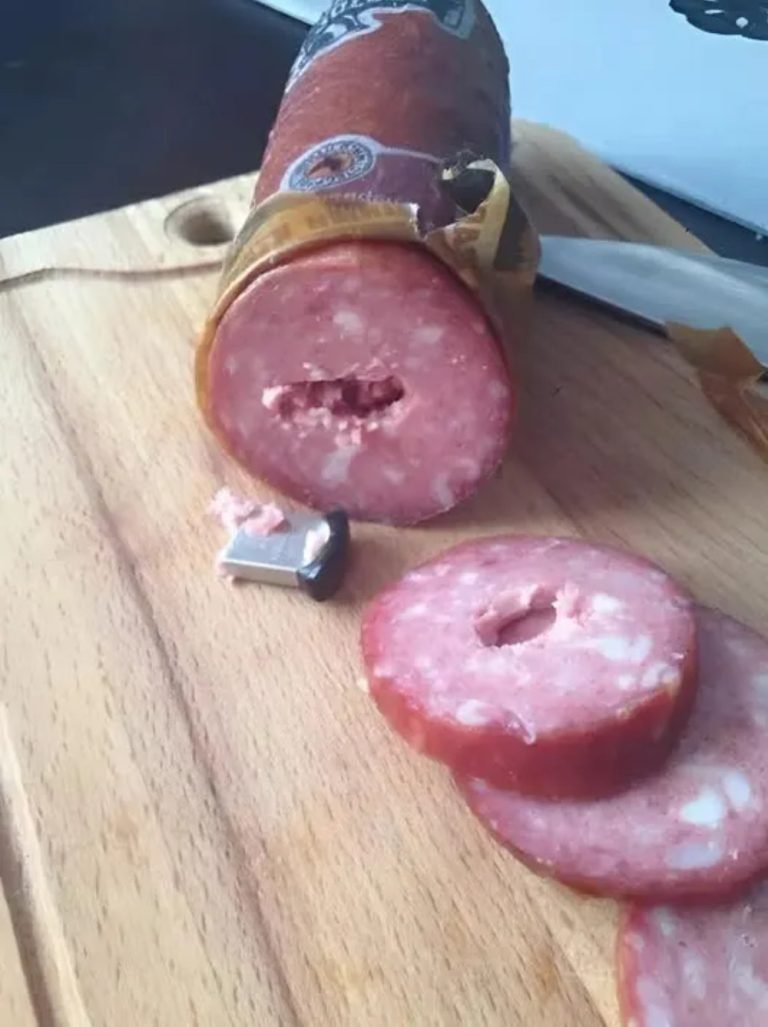
Power strips are in almost every home—under desks, behind TVs, next to the bed. And while they’re convenient, firefighters and electrical safety experts warn that using them incorrectly can turn them into a serious fire hazard.
Each year, thousands of electrical fires start because the wrong devices are plugged into power strips or overloaded extension cords. Many of these fires are preventable.
Here are the items you should never connect to a power strip — and the life-saving reasons why.
1. Space Heaters
Space heaters draw a huge amount of power. Even newer, energy-efficient models can overload a power strip in seconds.
Why it’s dangerous:
- They pull more watts than most strips are designed to handle.
- A strip can melt, spark, or ignite before the breaker trips.
What to do instead:
Always plug space heaters directly into a wall outlet—never a strip or extension cord.
2. Refrigerators & Freezers
You might think it’s harmless to plug a mini-fridge or spare freezer into a strip in the garage or dorm room… but fire departments strongly advise against it.
Why it’s dangerous:
- Fridges cycle on and off, causing sudden energy surges.
- This surge easily overloads a strip, especially older ones.
Use a wall outlet only, and avoid daisy-chaining multiple appliances on the same circuit.
3. Air Conditioners
Window AC units are one of the worst offenders. Their startup surge is extremely high, even for small units.
Risks include:
- Overheating the strip
- Melting insulation
- Electrical fires inside walls
AC units should always have their own dedicated outlet — ideally, their own circuit.
4. Microwaves & Toaster Ovens
Kitchen appliances that heat up are notorious for drawing heavy amounts of electricity.
Why experts warn against using power strips:
- Their wattage spikes unpredictably
- They create sustained heat, which stresses wiring
- They can cause multi-outlet strips to catch fire
If it gets hot, it needs a wall outlet. Period.
5. Hair Dryers, Curling Irons & Straighteners
Bathroom power strips may seem convenient, but firefighters say they’re a recipe for disaster.
These devices:
- Draw high wattage
- Heat up quickly
- Stress the thin wiring inside strips
Plug them directly into a GFCI-protected bathroom outlet.
6. Coffee Makers & Electric Kettles
Anything with a heating element belongs far away from a power strip.
They can:
- Overload circuits
- Melt low-quality strips
- Start fires under desks or kitchen counters
Use a wall outlet — preferably on its own circuit.
7. Portable Washer/Dryer Units
More common in apartments and dorms than people admit.
These appliances are too powerful for any power strip and must be plugged directly into a properly grounded wall outlet.
8. High-Powered Gaming PCs & Entertainment Systems
Modern gaming rigs, 4K TVs, sound systems, and graphics cards consume more power than most people realize.
Dangers:
- Overloading cheaper strips
- Causing overheating under entertainment stands
- Damaging sensitive electronics during surges
Use a surge protector rated for high wattage — not a $5 power strip.
9. Medical Devices (CPAP machines, oxygen concentrators)
For safety reasons, critical medical devices must be plugged into a reliable, grounded wall outlet.
Using a power strip risks:
- Overheating
- Unexpected shutoff
- Power loss during sleep or treatment
Your life is worth more than convenience.
General Rule: If It Creates Heat or Needs a Motor, It Doesn’t Belong in a Power Strip
Firefighters say this simple rule prevents most electrical fires:
“Heating devices and motor-driven appliances should always go into a wall outlet — never a power strip.”
Power strips are meant for low-power electronics like:
- Phone chargers
- Laptops
- Lamps
- Routers
- Clocks
And even then, only when the strip has proper surge protection.
How to Use Power Strips Safely
✔ Choose UL- or ETL-certified strips
✔ Replace old or frayed strips
✔ Avoid plugging multiple strips into each other
✔ Keep strips away from rugs and curtains
✔ Don’t overload with multiple high-watt devices
Final Thought
Electrical fires happen fast — often with little warning. Firefighters repeatedly emphasize that using power strips correctly can be the difference between a safe home and a preventable tragedy.
When in doubt, plug the device into a wall outlet.
Safety first. Convenience second.



